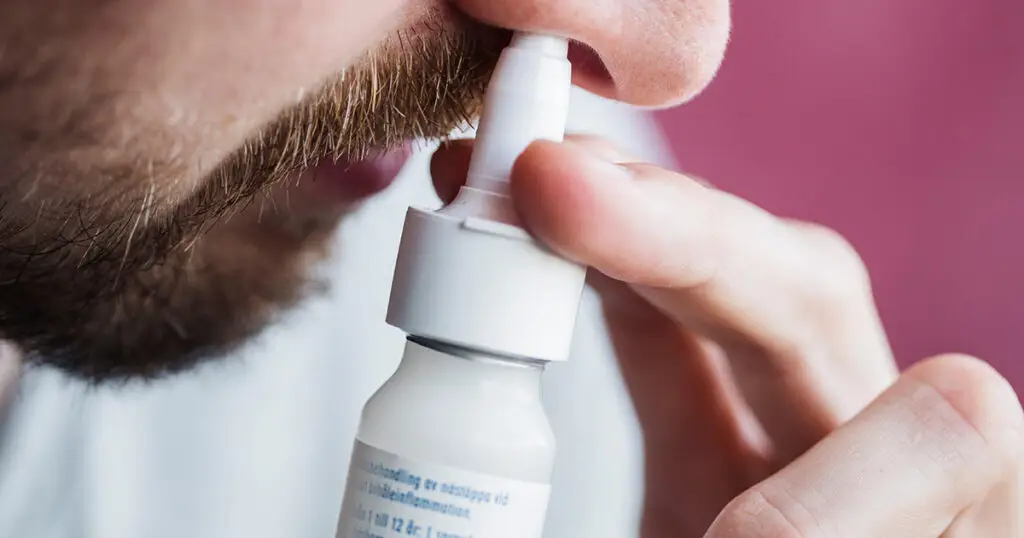Biden Administration Pushes Schools to Stock Naloxone

On October 31, The Biden administration announced that schools throughout the United States are encouraged to carry and learn how to administer naloxone during an overdose crisis to reverse deadly opioid effects in students.
Rahul Gupta, Director of the White House Office of Drug Control Policy, and Miguel Cardona, Secretary of Education, each wrote a letter stating that they believe that grade school students are at the frontlines of the opioid crisis. The letter expressed how naloxone can treat and benefit schools and communities in the event of an overdose.
Both Gupta and Cardona have been vocal in expressing their beliefs about the urgency of implementing prevention strategies for drug use in teens and what corrective measures should be taken in the case of an overdose. These strategies can save lives and reduce the opioid epidemic death rates.
Naloxone Explained
Naloxone is most well known by the brand name Narcan, a Federal Drug Administration (FDA) approved opioid agonist nasal spray. In 2023, it was the first opioid-reversal drug to be approved and sold over the counter in local pharmacies without a prescription. The nasal spray can reduce overdose deaths and does not increase the drug use rate in teens. Bystanders are protected by the Good Samaritan laws in many states and can help in the event of an overdose by administering Narcan.
Narcan reverses overdoses by opening airways in the body, allowing the brain to receive air, essentially counteracting the opioid effect on the brain. Narcan is most effective when given immediately when signs of overdosing are noticeable. This reversal treatment is only useful for overdoses on opioid drugs, such as fentanyl and heroin, and opioid pills like Percocet and Oxycontin. However, if Narcan is administered to a person who does not have opioids in their system, it will not cause harm or adverse drug effects that are not opiates.
Why Schools?
The push to keep Narcan stocked in schools by the Biden administration is suggested to help fight the opioid crisis by making Narcan more available. Families are encouraged to keep Narcan in their homes in case treatment is needed.
Faculty, students, and family members should be prepared on how to administer Narcan in the event of an overdose. Training resources for administering the treatment are encouraged and can be provided by local health departments, behavioral health agencies, and state educational agencies.
According to Emergent Solutions, the Narcan manufacturer is planning to lower prices for a double dose carton from $130 to $41 for community groups, first responders, harm reduction groups, as well as state and local governments to help prevent overdose deaths.
Teen Opioid Crisis
According to JAMA Pediatrics, over the past two decades, more than 5,000 teens have died from opiate overdoses associated with fentanyl. Over half of those deaths occurred within the first two years of the COVID-19 pandemic.
In 2021, around 1,500 teens died from fentanyl overdoses. The current overdose death rate is 30 times higher than during the year 2013 when the opioid death crisis first began to spark in the United States. Since 1999, the average age range of teens overdosing on fentanyl is mainly between 14 to 19 years old.
You may be asking yourself, “How are these teens getting a hold of such a fatal drug?” Well, according to Gupta and Cardona, teenagers can go online and purchase what they think is an opioid pain medicine to help relieve pain from a sports injury or a prescription stimulant to help them study. Instead, what they are actually purchasing is fentanyl in a pill form, causing a lethal overdose. With Narcan being carried and administered in schools and homes, the overdose reversal treatment can help save youth lives and lower overdose statistics rates in teens.
According to the U.S. National Center for Health Statistics, within the last year, an overall average of 112,000 people died from opioid overdose in the United States within a 12-month period. The majority of those deaths were caused by fentanyl or other synthetic opioids.
A study by the CDC showed that overdose death rates increased by 109% from 2019 to 2021. The Centers for Disease and Control Prevention support the push to bring Narcan into schools and homes. The CDC is on a mission to orchestrate drug-free communities and work alongside them to help ensure children’s safety from fatal substances and prevent drug use as well as overdose deaths.
Preventing Youth Drug Use
On October 30, The White House hosted the Youth Substance Use Prevention Summit to help raise awareness regarding the risks and dangers of illicit drug use, such as fentanyl, and reduce the mental health stigma surrounding drug use to help increase community safety.
The U.S. The Department of Education is taking action within local schools. They are implementing positive school cultures, embracing drug prevention strategies, and training faculty on how to intervene in the event of a drug overdose emergency.
Middle schools and high schools in Iowa and Washington have begun stocking their medical emergency kits with Narcan in case of an overdose crisis and provided training classes to faculty and students on how to administer the overdose treatment.
Public school nurses in New York City have already begun receiving Narcan and training for administering. In Fresno, California, high schools and school buses are supplied with Narcan in case of overdose emergencies. Overdose death is preventable.
